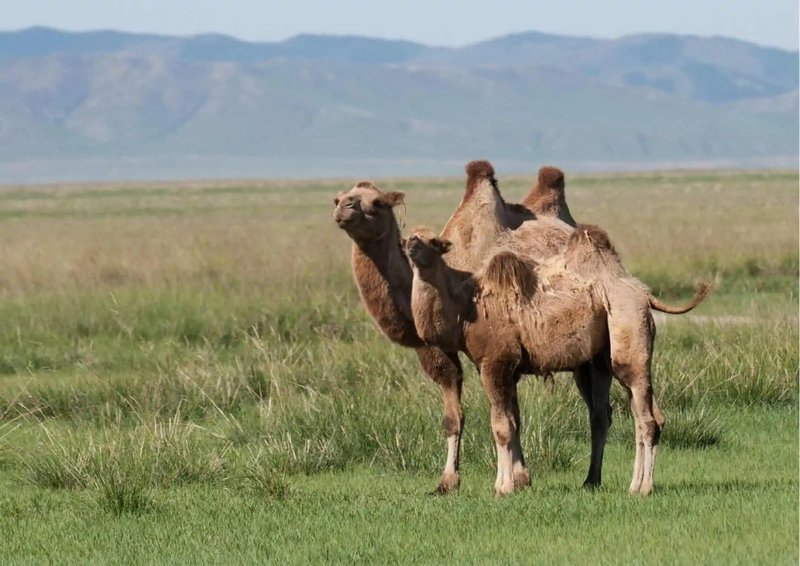
Imagine you’re sitting with a friend, sipping coffee, and trying to decode the complex emotional language of camels. Just like we might read body language or facial expressions, camels communicate through various behaviors. They have their own signs of aggression and affection, and picking up on these cues can help us interact with them safely and meaningfully. Let’s dive in and separate the calm from the chaotic in camel behavior.
Why Understanding Camel Behavior Matters
Understanding how camels express themselves can make all the difference, especially for those who work with or interact with these animals regularly. Knowing the signs of aggression or affection is crucial for ensuring safety, building trust, and fostering a healthy relationship between you and the camel.
For instance, if you’re a tourist on a camel ride, recognizing when a camel is feeling stressed or annoyed can help keep your experience enjoyable and safe. Similarly, if you’re a caregiver or a trainer, being in tune with their emotional state can enhance your connection and improve their training outcomes.
Common Signs of Aggression in Camels
Camels can be surprisingly aggressive, especially if they feel threatened or uncomfortable. Here are some signs that a camel might be feeling less than friendly:
- Head Tilting: If a camel tilts its head down and seems to stare intensely, it’s not just being dramatic. This posture can signal aggression, indicating that the camel is ready to react if necessary.
- Snarling or Growling: Believe it or not, camels can snarl! This sound is often made during confrontations and warns others to back off.
- Swishing Tail: A rapidly swishing tail might seem like a simple flick, but it can indicate that a camel is agitated. It’s a sign that something’s off in their world.
Understanding these signs can help you avoid potentially dangerous situations. If you see any of these behaviors, it’s best to give the camel some space.
Signs of Affection in Camels
On the flip side, camels can also be incredibly affectionate creatures. Recognizing their signs of affection can create a bond that’s both rewarding and enjoyable:
- Gentle Nuzzling: When a camel approaches you and gently nudges or bumps you with its nose, it’s usually a sign of affection. It’s their way of saying, “Hey, I like you!”
- Relaxed Posture: If a camel stands calmly with relaxed ears and a gentle expression, it’s a good indication that they’re feeling peaceful and comfortable in your presence.
- Purring Sounds: Yes, camels can purr! This soothing sound can be their way of showing contentment, especially when they’re receiving affection or being groomed.
Recognizing these positive signals can enrich your interactions with these majestic creatures. When you understand their affectionate behaviors, you can create moments of connection that both you and the camel will appreciate.
What Triggers Aggression in Camels?
Understanding what makes a camel aggressive is just as important as recognizing the signs. A few common triggers include:
- Fear: Like many animals, camels can react aggressively when they feel threatened. Sudden movements or loud noises can easily startle them.
- Competition: Camels are social animals, and they can get territorial. If they feel that their space is being invaded, they might display aggressive behaviors to establish dominance.
- Pain or Illness: If a camel is unwell or in pain, it may become irritable and aggressive. Always pay close attention to any changes in behavior as a sign something might be wrong.
By being aware of these triggers, you can approach camels with more understanding and care. This knowledge can prevent misunderstandings that may lead to aggression.
How to Care for Aggressive Camels
If you’re in a position where you need to care for an aggressive camel, it’s essential to prioritize safety for both you and the animal. Here are some steps to consider:
- Observe from a Distance: Give the camel space if you notice signs of aggression. Assess their body language before approaching.
- Use Calm Voice Tones: Talk to the camel in a soft, calming voice. This can help reduce their anxiety and show that you mean no harm.
- Don’t Make Sudden Moves: Quick movements can startle camels. Approach slowly and steadily to build trust.
Handling aggressive camels requires patience and understanding. Over time, with the right approach, many aggressive camels can learn to trust humans, easing their aggression.
Building a Bond: Fostering Affectionate Behaviors
Creating a positive relationship with camels can lead to affectionate behaviors. Here’s how to build that bond:
- Spend Time Together: The more time you spend with a camel, the more familiar they’ll become with you. Regular visits can help them feel safe and secure.
- Positive Reinforcement: Rewarding gentle behaviors with treats or praise can encourage affectionate actions. This method helps them associate you with positive experiences.
- Gentle Touch: Many camels enjoy being scratched or petted, especially in areas they can’t reach, like their necks. Be gentle and watch for their reactions to understand what they enjoy.
Building a bond with camels takes time, but with patience and understanding, the rewards can be profound. You’ll find they have unique personalities that can truly enrich your life.
Understanding camel behavior can be a fascinating journey, revealing the unexpected similarities between these animals and our own emotional expressions. By recognizing the signs of aggression and affection, you not only ensure safer interactions but also create deeper connections with these remarkable creatures. Whether it’s through gentle nuzzles or understanding their discomfort, every moment spent learning about camel behavior helps bridge the gap between species.
So next time you encounter a camel, take a moment to observe. You might just discover a hint of affection peeking through that grumpy exterior or see a warning sign that could save you from a tricky situation. Camels, with all their complexity, can teach us about patience, understanding, and the importance of connection, making them truly special companions in the animal kingdom.

